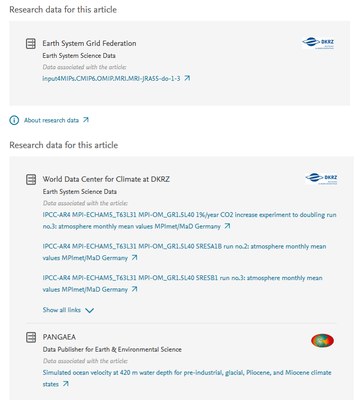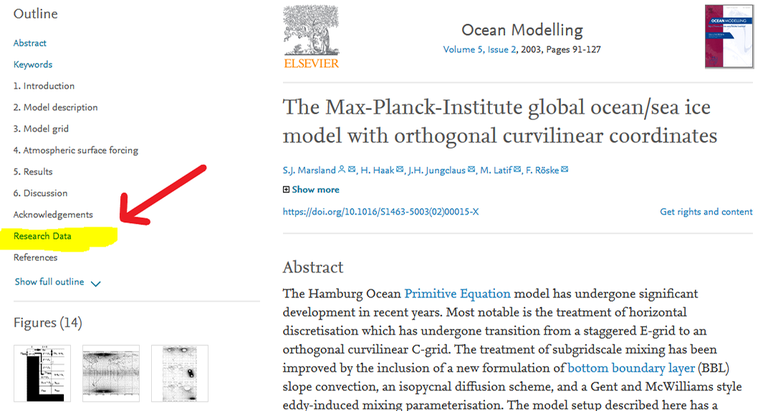09.04.2020
Good scientific practice includes - when publishing in scientific journals - referencing the data on which the research results are based in the publication list. DKRZ supports this practice by long-term archiving of the data and providing the data sets with a so-called DOI number, a digital object identifier (DOI) according to the specifications of DataCite, which works exactly like the ISBN number for books.
 When archiving their data in the long-term archive of the World Data Centers for Climate (WDCC) operated by the DKRZ and the CMIP6 data via the Earth System Grid Federation (ESGF), the researchers are already able to reference articles in the metadata. If the data set consists of model data, the authors are encouraged to link articles that e.g. document the model or analyze the model data.
When archiving their data in the long-term archive of the World Data Centers for Climate (WDCC) operated by the DKRZ and the CMIP6 data via the Earth System Grid Federation (ESGF), the researchers are already able to reference articles in the metadata. If the data set consists of model data, the authors are encouraged to link articles that e.g. document the model or analyze the model data.
Since March 2020, publisher Elsevier has also activated its Scholix interface at the request of DKRZ. Scholix stands for Scholarly Link Exchange and aims to improve the links between scientific literature and research data. Scholix actively accesses the article references of the DKRZ archives specified in the metadata, evaluates them and publishes the weblink of the corresponding data sets together with the articles on the Elsevier website.
Examples of this new practice can be found on the website of Elsevier:
https://doi.org/10.1016/j.ocemod.2018.07.002
https://doi.org/10.1016/S1463-5003(02)00015-X

With the new possibility of backward referencing using Scholix, Elsevier actively refers to the data used in scientific publications - these appear under the item Research Data (marked in yellow).
Linking scientific literature and data leads to increased visibility, discovery and retrieval of literature and data, which facilitates re-use, reproducibility and transparency.
If you have any questions or require further information, please contact: ZGF0YUBka3J6LmRl
